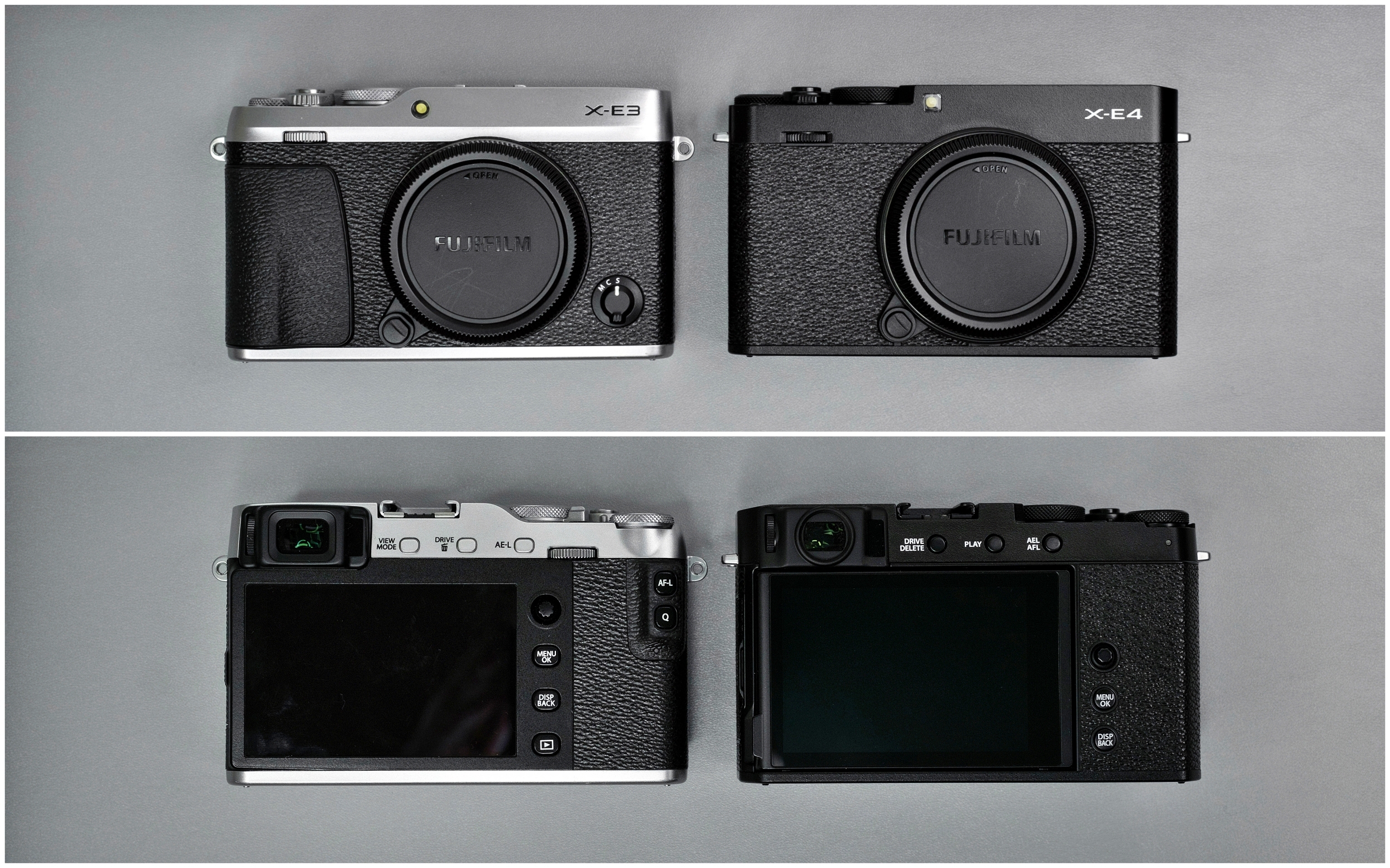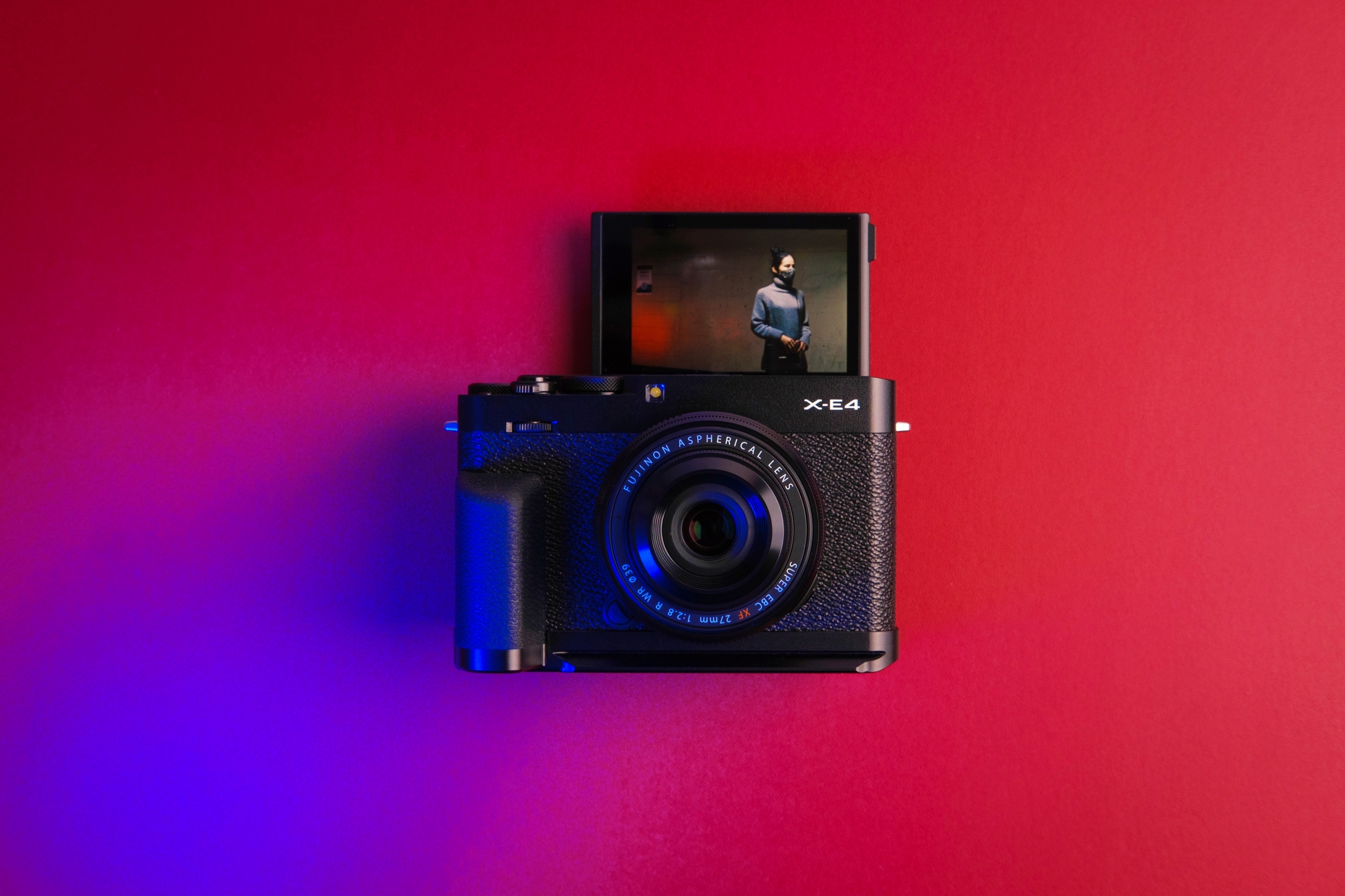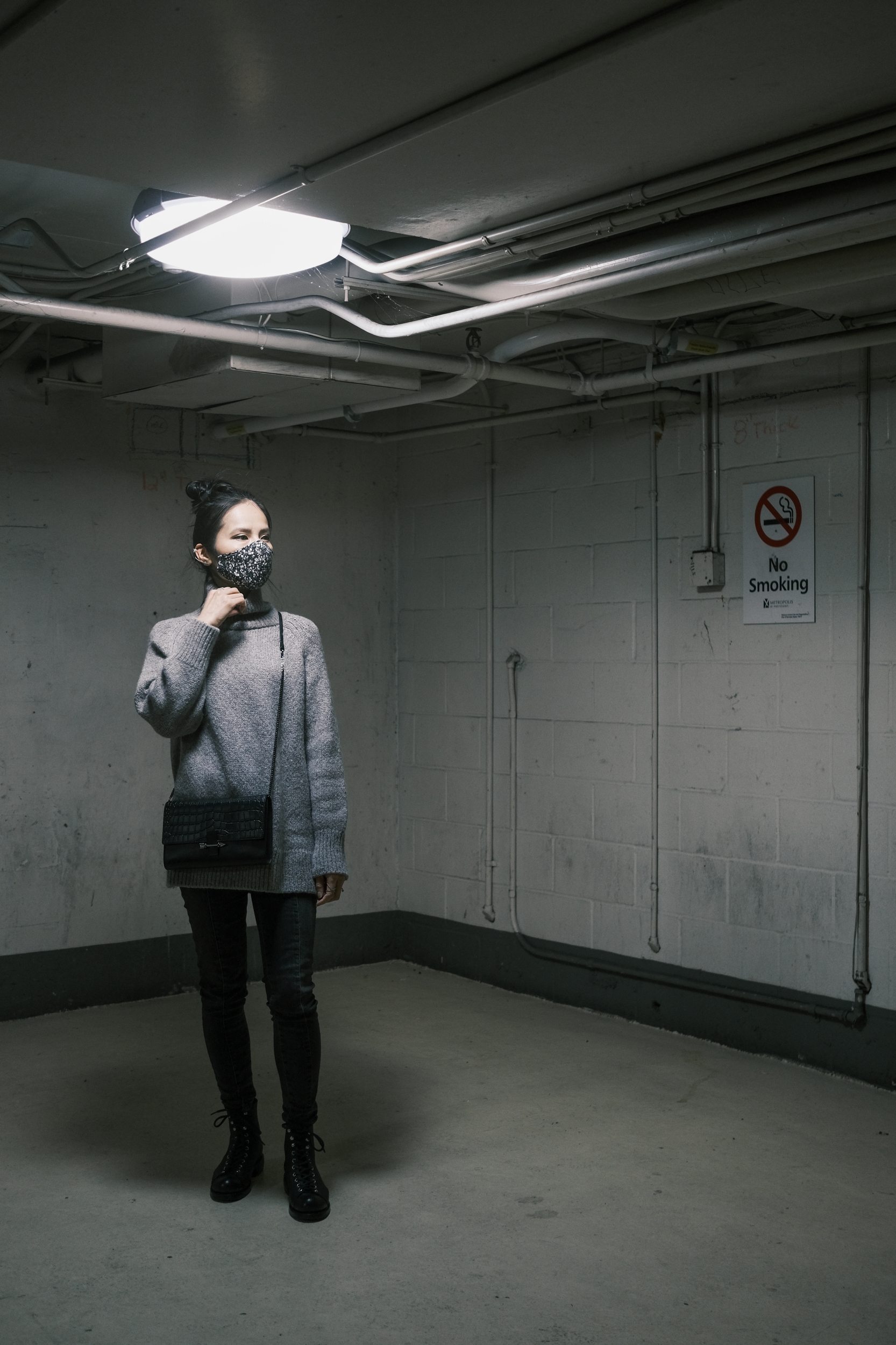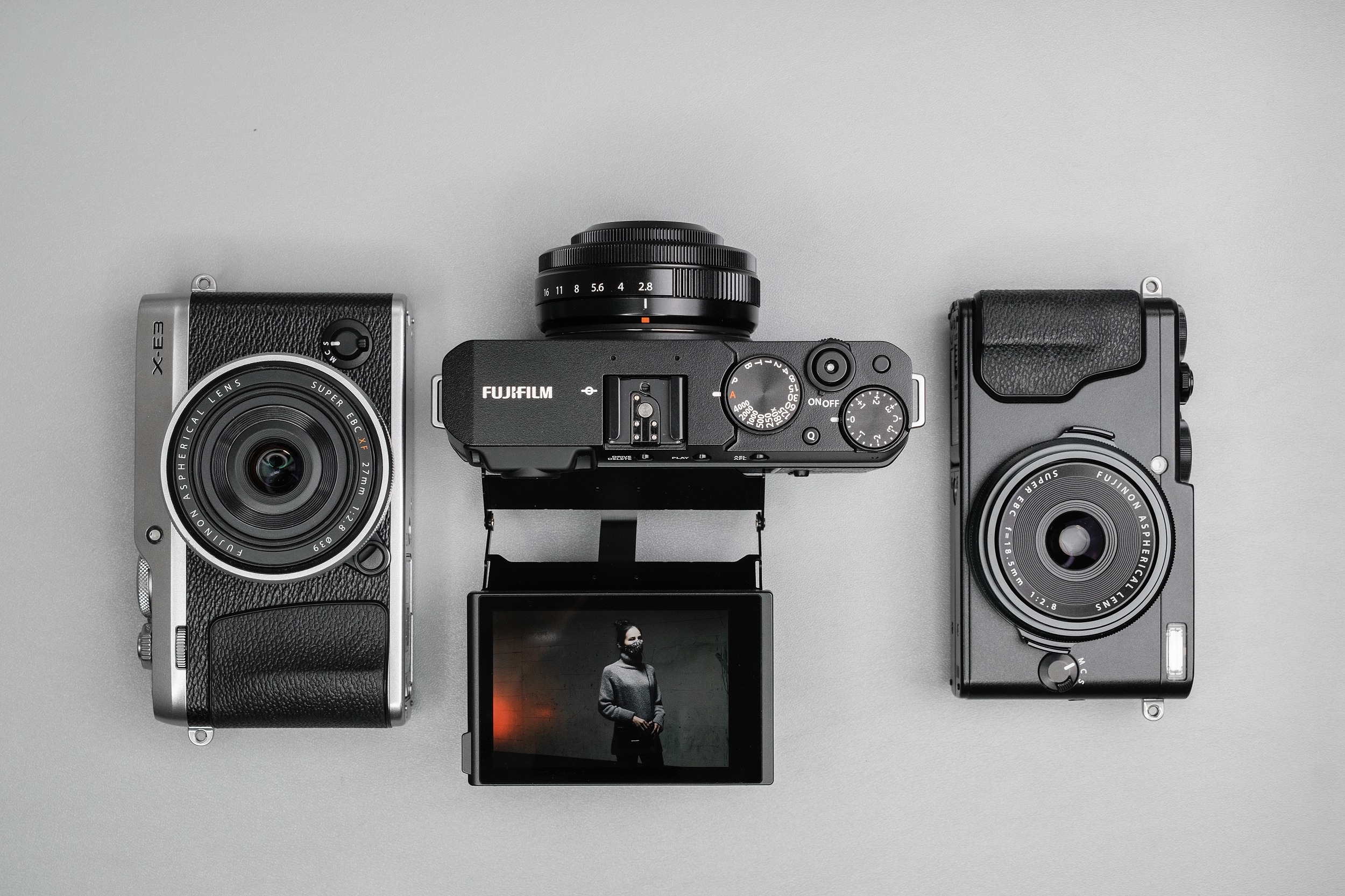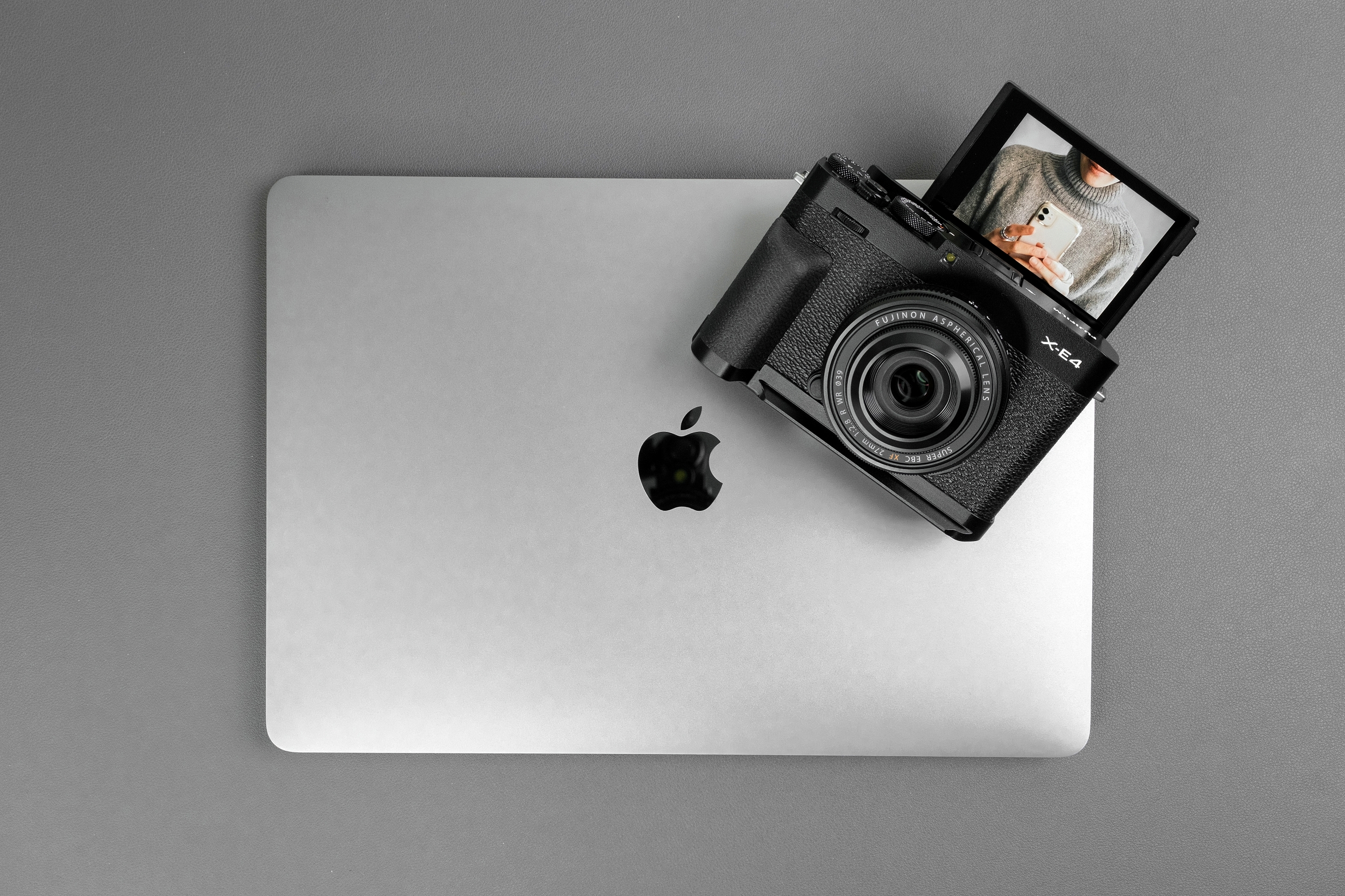The X-E4 has arrived… finally. There has always been a die-hard group of Fujifilm X-E photographers since its original release back in 2012. It was considered the little brother to the X-Pro series, although it was capable of taking the same quality images despite its diminutive size. There were rumours last year that the X-E series would end with the X-E3, but I knew they wouldn’t kill off one of the OG X-Series cameras. However, Fujifilm would have to do something different to distinguish it from the X-T30, X-S10, and the X100V. All these cameras share the same sensor and processor; so which design direction would Fujifilm take with the new X-E4? The marketing tagline gives us a big hint: Make More with Less.
This minimal approach to the new Fujifilm X-E4 has aesthetic benefits, but also ergonomic and functional consequences. As previously mentioned, the new X-E4 shares the same 26.1MP BSI X-Trans APS-C sensor, X-Processor 4 quad-core CPU, and latest firmware as the rest of the current X-Series line-up. This is a very competent compact camera. Photographically it can keep up with the X-T4 and X-Pro3. Fujifilm also decided to resurrect the flip-up ‘selfie’ LCD screen from the X70 and X-A5, distinguishing itself from the X-S10’s full articulating screen. The biggest difference between the X-S10 and X-E4 (other than IBIS) is the form factor. However, the same benefit of having a smaller, sleeker, and lighter body also becomes a detriment when it comes to ergonomics and functionality.
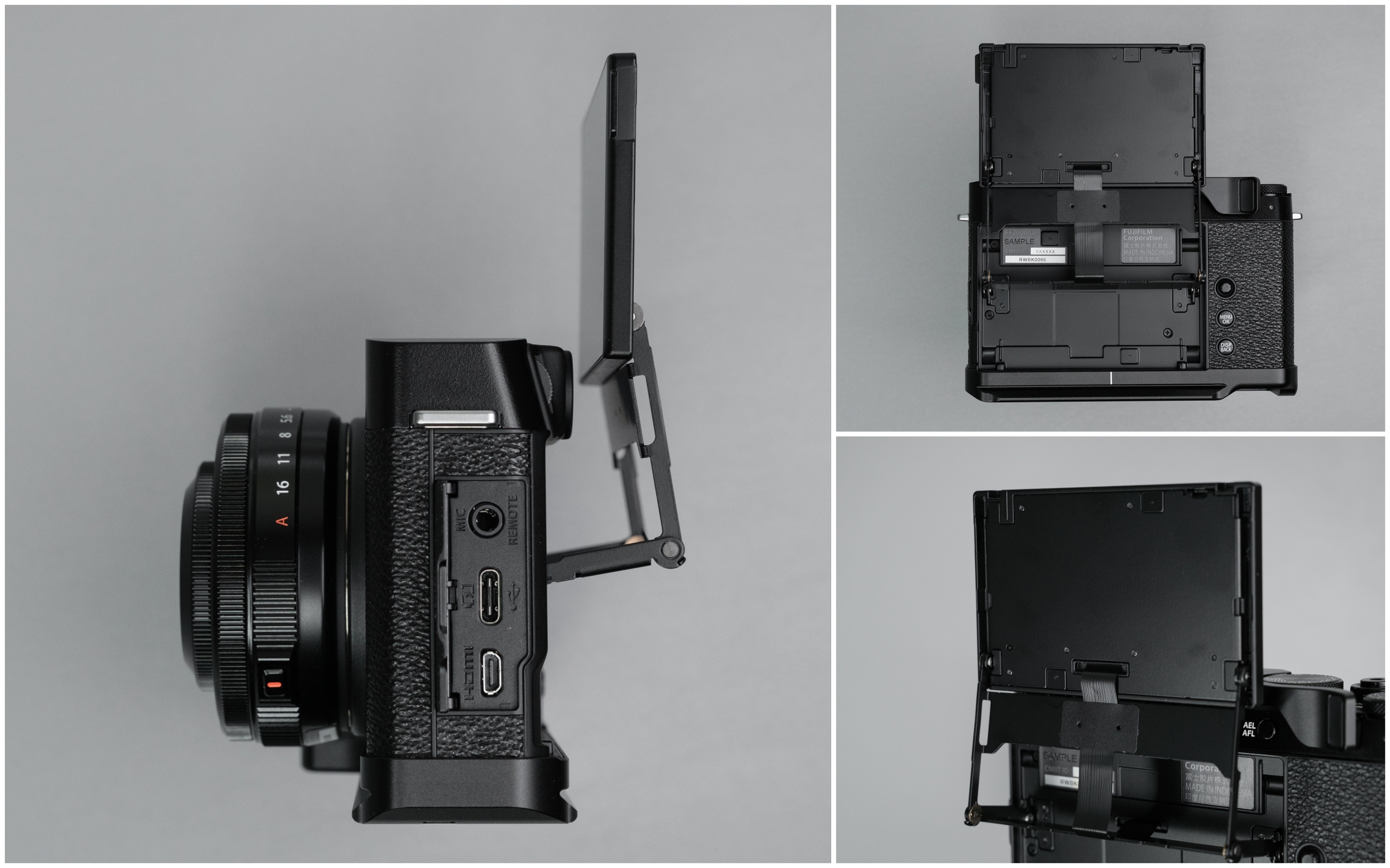
The newly designed flip-up articulating screen has an L shape to the frame. This also exposes the cable ribbon. I wish Fujifilm put some type of cover to protect it.
When Fujifilm announced the X-E3 back in 2017, the marketing tagline was ‘Minimalism’. Fujifilm removed the pop-up flash and D-Pad, but added a touch screen and a joystick. The trade-offs were worth it and I really enjoyed using the X-E3, even replacing the mighty X-T2 for one of my Hong Kong projects. What did Fujifilm remove from the new X-E4 for the sake of design and aesthetics? Here’s what’s missing, moved, or changed on the X-E4 in comparison to the previous X-E3:
- removal of the rear dial
- removal of the rear thumb grip
- removal of the front grip
- removal of the front Focus Select dial
- removal of the View Mode button
- removal of detachable EF-X8 pop-up flash from the kit
- removal of the Auto Switch Dial but replaced with P mode on the main dial
- removal of the AF-L button and merged with the AE-L button (one less custom button)
- reposition of the Play button along the bottom right of LCD to the top of LCD
- changed the standard eyelet style strap lug and replaced it with the slotted lug
- updated the USB2.0 Micro connector to USB-C
- updated the 2.5mm microphone-remote input to the 3.5mm input
As you can see, Fujifilm wasn’t kidding when they said ‘Make More with Less’, at least from a physical dial-button perspective. I was able to customize the X-E4 similar to how I had the X-E3 set up, but I had to utilize all 4 of the screen swipe Fn settings to do so. That’s fine in good weather, but in the winter with gloves on, I had no quick access to film simulations, view mode, focus mode and AF mode unless I dug into the Q menu. This wasn’t a deal-breaker for me, but less than optimal. Fujifilm also removed the real thumb and front grip for the sake of aesthetics and thinness. They also squared off the entire silhouette except for the notch on the top left top panel (a nod to the X100F). Moreover, the X-E4 looks more minimalistic and industrial, but it’s also less ergonomic and functional. There is an optional thumb rest ($69 USD) that takes up the hot shoe and hides the top panel Q-button, and an optional hand grip ($89 USD) with a functional Arca-Swiss type tripod connector; but that just brings us back to the original X-E3 design concept.
Fujifilm is also marketing the updated XF27mm f/2.8 R WR lens with the new X-E4. In terms of size and weight, it’s basically the same as the X100V, and this is how Fujifilm is marketing this kit as an option to the X100V. For me, these are two completely different types of cameras, two different lenses, and the target market is also very different. The new XF27mm is improved since it now has an aperture ring and WR; but the lens design and autofocus motors are exactly the same as the previous version. I was never a big fan of the optical design of the XF 27mm lens, but I must admit I’m a fan of the compact size and the focal length, being close to 40mm equivalent in full-frame. The autofocus speed, accuracy, and noise definitely feels like first-gen X-Series, but in good light with steady hands, this lens can get the job done. In addition, the aperture dial is now necessary on the X-E4 since there’s no longer a rear dial to control both aperture and shutter speed via separate dials. Overall the X-E4 and XF27mm f/2.8 R WR works well as an everyday carry for casual and street photography.
What are my initial thoughts on the new X-E4? I have mixed feelings. The X-E1 was the very first Fujifilm X-Series camera I ever reviewed and I have a soft spot for this camera. It was always the smaller, lighter, and cheaper option to the X-Pro series, and I always felt there weren’t too many compromises. The previous X-E3 was one of my favourites. All it really needed was an articulating screen and updated I/O (USB-C, 3.5mm input). The new X-E4 does not feel like a replacement for the X-E3. It’s a refreshed, redesigned camera for a completely different segment of the market. Look at Fujifilm’s marketing lingo, pictures, and videos. It’s a gateway camera to a new generation of photographers looking for a powerful but compact camera who are social media savvy. Fujifilm even stopped calling it a rangefinder styled camera (which would appeal to us old school shooters) and now say it has an off-set EVF. Talk about a shift in marketing lingo!
If you are a current X-E3 user looking to upgrade, think long and hard if you can live without many of the control features and ergonomics. You can access the missing functions via the Q-menu, swipe functions, or a long press on the front dial or rear joystick; but it’s slower and less intuitive. However, you are getting the latest sensor + processor and all the benefits of having the latest firmware, including faster and more accurate autofocus, new film simulations, and updated video features. Don’t forget about the very useful articulating screen from the X70, great for waist-level shooting for your street photography. If you can’t live without the control features, I recommend the X-T30. It still has all the buttons and dials that are on the X-E3, plus a dedicated mode dial and pop-up flash. If you’re a fan of the rangefinder aesthetics, consider the X100V. Yes, it’s more expensive than the X-E4, but it includes a sharp built-in 23mm f/2 leaf shutter lens and the body is weather-sealed. If you must have an interchangeable lens camera, then you will have to move up to the X-Pro3. If none of these options are appealing to you, wait for one more generation and keep your current X-E3.
In conclusion, the new X-E4 is a very competent interchangeable lens camera from Fujifilm. Although it may not be what X-E3 shooters were looking for, this camera will appeal to photographers who want a compact yet powerful mirrorless body. The best selling feature of this camera is size, weight, and the flip-up articulating screen. Its hidden superpower is the sensor, processor, and firmware that equals the performance of the X-T4 and X-Pro3 when it comes to image quality. At $849 USD body only, it’s half the price of the X-T4, making it a good back-up body for those who are already in the Fujifilm X-Series ecosystem. For me, let’s just say I’m relieved Fujifilm didn’t kill the X-E series. We now have 3 compact ILC bodies to choose from, giving us Fujilovers a choice when it comes to style, ergonomics, and features. The X-E4 can definitely do more with less, but it could also have done more with the same. Much like Apple’s design philosophy, Fujifilm’s design choices seem to be focused on minimalism, at least on the X-E4 and the recently released X-S10 and X-Pro3. Fujifilm, I can function without the D-Pad or built-in flash, but please don’t take away my Focus Select dial, View Mode button, thumb grip, front grip, rear dial, and eyelet strap lugs. Thanks for reading and happy shooting!


